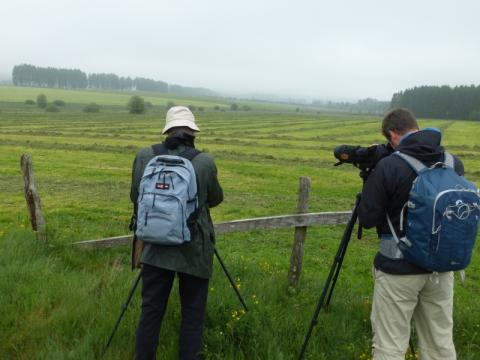Cooperation for the implementation of a decentralized Biodiversity monitoring in Wallonia

About this good practice
Biodiversity conservation in Wallonia requires accurate, validated, and up-to-date data on local habitats and species. This data informs decision-making, drives concrete restoration actions, and facilitates the development of conservation strategies, such as the 360° Biodiversity Strategy. The CiBioGo project focuses on three aspects of this strategy: implementing the Regional Ecological Network, managing Natura 2000 sites, and developing nature reserves. The Walloon administration faces limited human and financial resources for these missions, necessitating prioritization and innovative solutions. Collaboration with civil society has proven effective in collecting biological information. Natagora, coordinating volunteers for over 40 years, conducts semi-standardized sampling of biodiversity indicators. Since 2008, a collaborative system established by the administration and Natagora ensures data exchange, common standards, and expertise validation across taxonomic groups. This collaborative approach yields a win-win scenario: multiplying collection capabilities for the regional administration and leveraging the expertise of experienced naturalists for validation. Volunteer and expert involvement in regional conservation policies, strategies, and projects adds value to their efforts and promotes capacity building.
Resources needed
- Natagora:
Coordination work for a 50% FTP for experienced project manager.
- Administration:
5% of 2 data management employees FTP
€10,000 is allocated annually to the association to cover its data management costs
- Both:
10 MD/year used for coordination meetings and exchange protocols.
Evidence of success
- Recording of > 11 million biological data since 2008; > 40% of which
from Natagora.
- Official reports to the EC since 2013 (Art 17 of the Habitats D., Art12 of the Birds D.);
- Maps of distribution of species on the regional territory;
- Red lists to determine regional emergencies;
- 2 major atlases on the distribution and status of bird and amphibians/reptiles
Potential for learning or transfer
The potential for the transfer of this good practice is considered to be high as the context of a public authority and nature conservation associations working towards common objectives is common.
The driving force for the implementation of such a practice must be the positive impact on the Community through the preservation of local and regional biodiversity issues, the awareness of volunteers and the strengthening of their capacities.
However, certain conditions must be met in terms of the common desire to share resources and to act transparently and openly.
Establishing a working framework, with the development of partnership and exchange agreements in particular could be useful. We also believe it could be relevant to set up an assessment disposal for such collaboration and in order to adjust practices accordingly.
Further information
Images


Good practice owner
You can contact the good practice owner below for more detailed information.